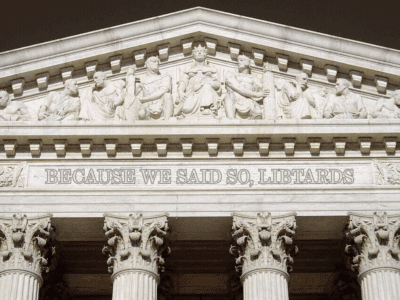EPA’s Best Option: Co-Firing
Yesterday’s decision leaves open a powerful regulatory tool.
What can EPA do to cut carbon emissions from coal-fired power plants after yesterday’s decision in West Virginia v. EPA? The decision clearly ruled out any direct mandate to shift generation from coal generators to cleaner power generators. But the Supreme Court didn’t endorse Trump’s ultra-limited interpretation of the law either. This leaves EPA with a powerful regulatory tool: a requirement that generators add natural gas or other lower-carbon fuels to their power mix.
Why is this important? A study by researchers at Resources for the Future showed that carbon emissions from coal plants could be cut in half in just a few years if generators were required to use 20% natural gas in the mix. That’s about 450 million tons of carbon per year. The reduction would take a little longer but cost less if plants were allowed to use emission trading as a form of compliance. The study didn’t model this, but other research suggests that use of biomass such as woodchips might also be effective.
This approach should not be blocked by the West Virginia case. As the Court recounted, “Since passage of the Act 50 years ago, EPA has exercised this authority by setting performance standards based on measures that would reduce pollution by causing plants to operate more cleanly.” It saw the Clean Power Plan as doing something quite different, restructuring the power industry rather than cleaning up sources. Co-firing would fall comfortably within EPA’s normal role of “setting performance standards based on measures that would reduce pollution by causing plants to operate more cleanly.” In other words, a co-firing standard should not trigger the major questions doctrine that brought down the Clean Power Plan.
Although I don’t see West Virginia case as a barrier, there could be more mundane legal issues. The industry has argued that in EPA has eschewed requiring changes in a plant’s proposed fuel mix in implementing another part of the Clean Air Act, which deals with pollution from new plants. But that involves a different part of the statute, designed for other purposes, so that argument should be surmountable. Like many other EPA standards, a co-firing standard might cause some plants to close, but that’s nothing exceptional.
This is a second-best approach. It’s not as good as what the Biden EPA might have accomplished with something like the Clean Power Plan. But for a fallback option, it’s not too bad. It could achieve real cuts, and it could achieve them quickly.
Reader Comments
6 Replies to “EPA’s Best Option: Co-Firing”
Comments are closed.







Surely the EPA has been considering zero emission vehicle mandates similar to California’s that might take effect in 2027. Yesterday’s ruling might make such a strategy unworkable, triggering a major questions challenge from a Court looking to fight this particular philosophic battle. The EPA can raise stringency dramatically under the current system used to regulate corporate average fuel economy and achieve much the same result as a ZEV mandate. Requiring automakers to manufacture quotas of ZEVs looks remarkably similar to requiring power plant operators to generate elctricity with more natural gas and renewables, and would likely be struck down. Simply raising stringency might not be as effective as a nationwide ZEV mandate, but it is probably now the wisest course.
I think you’re probably right about a ZEV mandate. But I’m not 100% sure about that. ZEV mandates have been treated as part of California’s waiver, which may be a precedent for considering them covered by EPA’s regulatory authority as well. And CAFE does have a built-in trading mechanism, which is also different. Anyway, simply ratcheting down mileage is probably safer.
Dan, one of the most provocative and hopeful (for the human race in 1990) books I ever bought was “The Gaia Atlas of Future Worlds: Challenge and Opportunity in an Age of Change” by Norman Myers.
I still remember thinking WOW!, all we have to do is follow-up using Part Three “Creating the future” (toward 2000 at the time the book was published).
Now it is 2022 and we are worse off than we were then for reasons you and Myers know far better than me.
Your post: “EPA’s Best Option: Co-Firing” is the latest effort to make the some of right things happen today, but my paramount question is: How do we make the right things happen in time?
So I also keep wondering, can social scientists find ways to educate and motivate We The Peoples of Earth on how to survive Global Warming in time, so our grandchildren can still inherit an acceptable quality of life with what’s left of our planet?
Good Luck with implementing your recommendations.
Dan, what is UC doing to meet the required urgency today, due to irreversible impacts of global warming we are suffering today?:
“The world must come together before the ability to limit global warming to 1.5 degrees Celsius is out of reach,” said US Climate Envoy John Kerry in response to the IPCC report. “What the world requires now is real action. We can get to the low carbon economy we urgently need, but time is not on our side.”
Thanks for this! I’m having trouble, though, understanding why this is a better approach than just requiring that no plant emit more than, say, 100 kg CO2/MWh. That would require conversion to CCS, and would render all the coal plants uneconomical. Problem solved, no?
Daniel – The problem is that a technology that makes all the coal plants economical wouldn’t qualify as “adequately demonstrated.” I have seen some discussion, though, of the possibility that EPA might be able to justify a partial CCS requirement. I have to admit I’m not enough of an expert to know whether that’s really technically or economically feasible for existing coal plants. If it is, it sounds like a great idea.